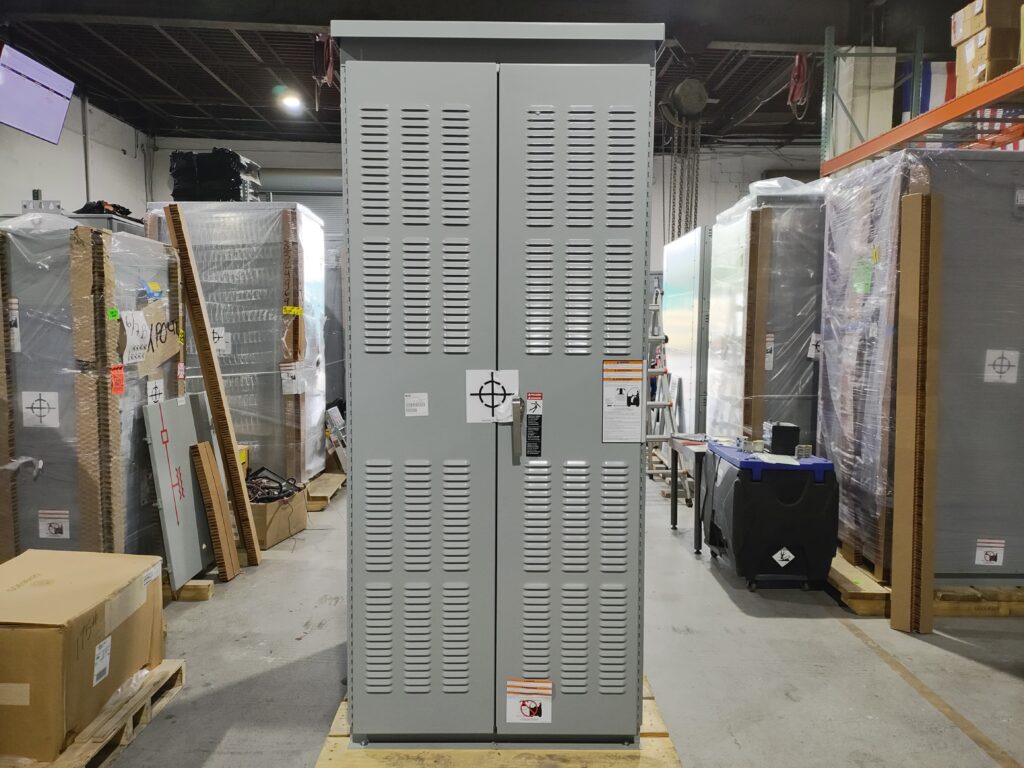Automatic Transfer Switch: 3-Pole or 4-Pole?

When it comes to installing a backup power system like a standby diesel or natural gas generator for your business or facility, there are many decisions that need to be made. An often overlooked aspect when it comes to these installations are the inclusion of an Automatic Transfer Switch (or ATS for short). As we’ve previously covered, an automatic transfer switch (ATS) is a device that transfers electrical load between the main power source and a backup power source, such as a backup generator. For a quick rundown on how they work – an automatic transfer switch (ATS) connects to the main service breaker and generator and prompts the generator to run in the event of a power outage and prompts the generator to turn off when power to the main grid is restored. Without an automatic transfer switch (ATS), personnel would have to be available on-site to manually run the backup generator and switch connections from the main utility to generator power. Additionally, an automatic transfer switch (ATS) can help keep your facility in compliance with various electrical and local codes, as well as standards for buildings, including some that are required by the NEC (National Electrical Code). These codes and standards act as a guideline that should be adhered to when evaluating whether or not you will ultimately need a 3-pole or 4-pole ATS.
When evaluating the need between a 3-pole ATS and a 4-pole ATS, it’s important to consider whether or not your emergency power system will be separately derived. Per the NEC, a separately derived power system is, “a premises wiring system whose power is derived from a source of electrical energy or equipment other than a service. Such systems have no direct connection from circuit conductors of one system to circuit conductors of another system, other than connection through the early, metal enclosures, raceways, or equipment grounding conductors”. The determination of whether a power system requires being separately derived or non-separately derived is called a Grounding Scheme.
When dealing with an automatic transfer switch (ATS), it is not as simple as buying picking one out, purchasing it, and having it shipped out. Properly choosing and installing an ATS is a complicated process and there are many factors, considerations, and possibly different setups involved with installing an ATS in your backup power system setup, we’ll cover some of the basics between 3-Pole and 4-Pole automatic transfer switch units.
3-Pole Automatic Transfer Switches
3-Pole ATS units are generally used for power systems that are not separately derived. What this means is there is only one bonding jumper between the neutral and ground, which would mean that the neutral is connected to the ground at the service and not at the generator. In order to break this down as easily as possible, we could say that the system has a common neutral for the entire backup power system. Due to this reason, all ground fault currents will flow back to a single grounding point. If a ground current flows through a de-energized source back to neutral, it can result in a trip of the ground fault relay to protect the de-energized source.
4-Pole Automatic Transfer Switches
4-Pole ATS units are commonly used for power systems that are separately derived. For backup power systems that use a 4-Pole ATS, each source’s neutral is bonded to the ground at its source, which means that each source is considered separately derived. This generally means that there are no direct electrical connections between sources and the neutral are not connected. Regardless of which source the load is switched to, the fault current will travel through the ground directly back to the source that is currently supplying the load in instances when a ground fault occurs.
Generally speaking, distinguishing whether or not you would need to install a 3-Pole or 4-Pole is based off a few factors. When it comes to detecting ground faults, ground fault sensing is dependent on being able to accurately sense ground fault currents. Ground fault currents must return to its source on a known path relative to ground fault current transformers. In the case of a standard emergency standby backup power system, there are two criteria that must be met:
- There can only be one neutral-ground connection on any neutral bus at one time
- Ground fault sensors must be downstream or on the load side of the bonding connection.
In situations where both rules need to be followed when connected to either the normal or emergency power source, the neutral must be switched using a 4-pole switch.
Why Not Always Buy a 4-Pole ATS?
4-Pole ATS units are generally more expensive than a 3-Pole ATS, among other factors. While it can be said that a 4-Pole ATS may be used for setups that require a 3-Pole ATS, it is often at a greater cost, can involve more setup than necessary, and may actually be overkill. There are many applications that may only require a 3-Pole ATS and if so, a 3-Pole ATS is often recommended as it can meet project requirements, while keeping costs lower.
The topic of transfer switches can often be confusing and is a very involved process that requires a deep understanding to safely and properly install. There are many factors and considerations that must be made when evaluating the scope of a project and specific needs for an application. If you’re looking for more information regarding automatic transfer switches or determining whether you need a 3-Pole or 4-Pole ATS, reach out to us at Woodstock Power Company by filling out our Contact Form or giving us a call at 610-658-3242
The Woodstock Power Company Experience
We have industry experts that focus on generator sets and generator engines, with in-depth industry knowledge to help you choose the right generator that fits your needs.
Our experts are ready to assist you from answering any questions you may have about power generator sets to helping you find the best selection in our inventory based on:
- Peak & Average Power Requirements
- Fuel Preference (Natural Gas or Diesel)
- Portability & Stationary Power
- Prime & Standby Generator Requirements
- Available Space & Exhaust Restrictions
Our experts are also able to help coach you on Final Tier 4 regulations and the potential impact it can have on your generators.
We carry only the most top rated new, used, and surplus power generator sets for sale, providing you with a great value generator that will fit your budget.
Our generators have been thoroughly inspected, serviced, and verified, which ensures that you will be buying a quality generator that you can depend on. If a generator is not up to par with industry standards, we make all necessary repairs or modifications, and fully test every generator before we sell. This ensures a full turnkey generator that’s ready to fire up and go!
Due to our wide selection of generator sets, we’re confident that we can find the model that best suits your operational needs.
We also buy used generators in good quality, if you have already upgraded and you’re looking to sell your older model.
Feel free to contact us with any questions, concerns, or inquiries to learn more about the Woodstock Power Company experience and the quality level of products & services we provide.

